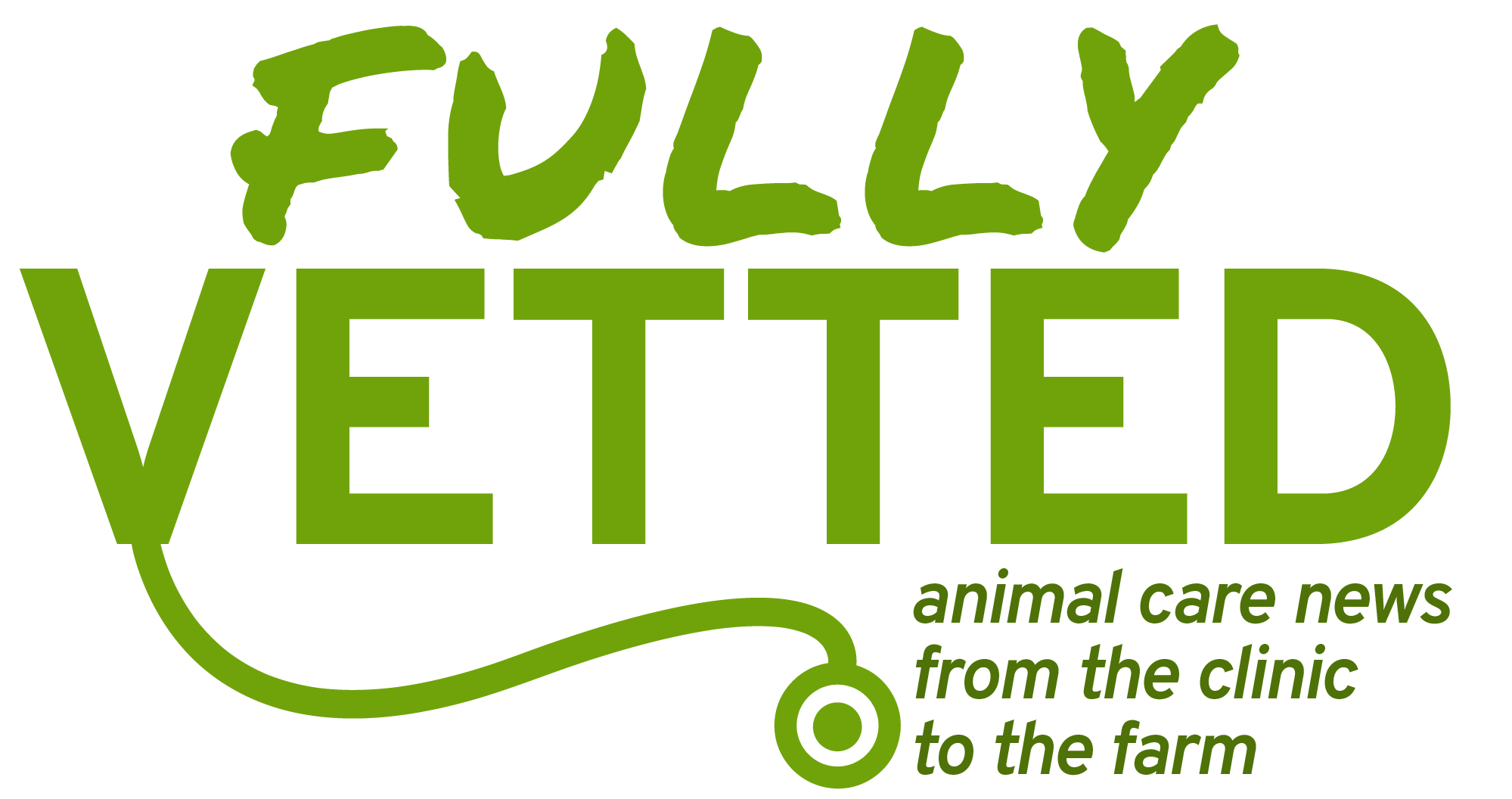
Episode 80
Under Control: Xylazine Moved to Schedule III Status
If you’ve tuned in to the evening news over the last few months, you’ve heard that xylazine has made its way into the U.S. illegal drug supply, causing horrific side effects and even deaths in humans… and putting xylazine in the spotlight for both state and federal legislators. Earlier this year, Ohio was one of the first states to make xylazine a Schedule III controlled drug. How has this affected the licit use of xylazine in veterinary medicine? On today’s show, OVMA Executive Director Jack Advent joins us to explain.
Episode Guest

Jack Advent
cAE
Jack Advent is the executive director of the Ohio Veterinary Medical Association and past president of the Ohio Society of Association Executives. Learn More »
Transcript
Mia Cunningham: In March of this year, Ohio became one of the first states to identify xylazine as a Schedule III controlled substance. Can you give us a brief history as to how we kind of landed here?
Jack Advent: Sure. So, unfortunately, xylazine is being used illicitly, and that’s been occurring across the country, not just in Ohio, and is being mixed with fentanyl. Obviously an inappropriate use for humans. It’s an illicit pathway in inappropriate drug channels.
Krysten Bennett: For those listeners who are not veterinarians, can you explain why this drug is so important to the profession?
JA: Sure. So xylazine is actually a very important drug that’s used in sedating animals for a variety of species, but most commonly in the large animals, in the equine and the bovine sectors. Xylazine is a really important drug for them to have access to. For one, it is well-established. For dealing with in the bovine sector, it’s already established that it has a limited withdrawal time. From a food safety standpoint, it’s a well-established drug that we know we can use. It’s also a drug that you don’t need a whole lot of to sedate a very large animal. So it’s it’s good in that way.
There are occasions where you need to not not just in a surgical sense, but also if you have an animal that’s fractious. So for the protection of that animal, as well as for those around it, you need to be able to quickly sedate it in an efficient way. So xylazine is certainly used in that standpoint by veterinarians and sometimes by the producers to be able to deal with a situation like that.
There’s not another good alternative. So it’s not just a question of, well, you can’t use xylazine over here, so use drug ABC.
So, you know, it’s well-established. It’s effective. There are a lot of good reasons why it really needs to be available to veterinary medicine and ultimately, that’s for our benefit, too, in the context of food safety and in terms of worker safety. We want to make sure that those pipelines continue to exist and that xylazine is on the market for the licit use of it, not the illicit.
KB: As far as xylazine abuse in humans, we know this is happening, but I’m curious as to the scale. Is this a well-documented problem, or are legislators trying to get ahead of something that hasn’t happened yet in hopes of avoiding another drug epidemic?
JA: So xylazine is a known problem. It’s been identified by the Drug Enforcement Agency as being used in illicit ways. And it’s evident and some of the physical symptoms that occur with the end users, that drug creates some very horrible side effects for humans. So it is well-established, unfortunately, that it has been occurring. But the source of that illicit xylazine that the DEA at least identifies is really coming from China, and it’s coming in bulk form. It’s coming in a powdered form. It’s not in the same kind of form of xylazine that veterinarians use – as an injectable. Veterinary medicine is not the source of illicit xylazine.
KB: So are we seeing this problem in Ohio?
JA: At OVMA, we’re not in the front lines of of drug enforcement, but we’ve been told that, yes, it is occurring in Ohio, as well as across the country. Reportedly, the major problem is not far away—in Pennsylvania—but it is occurring in Ohio.
MC: Well, Jack, given that, what’s being done on the state level to ensure Ohio veterinarians have. access to xylazine?
JA: When we became aware that the state of Ohio wanted to make xylazine a controlled substance, we immediately reached out to the (Gov. Mike Dewine) administration, made them aware of its appropriate use in veterinary medicine and how important it was. So, while recognizing the problem that’s going on with human illicit use, we wanted to make sure that its licit use would continue and that the distribution channels for xylazine would remain open.
We did work with the Ohio Department of Agriculture and the Board of Pharmacy. We did ask at the time that they came to us, that they would wait, because there’s a federal resolution underway. However, they felt that they needed to take some action right away. So obviously, we’re trying to make our members as aware as possible that this might occur, and we tapped into some national information to access in terms of its availability.
MC: What are the challenges to the distribution channel?
JA: So, you know, as kind of the so-called perfect storm scenario, when there was first conversation about the problems with xylazine being abused in humans, unfortunately the there are three manufacturers of the legitimate use of xylazine in veterinary medicine. One of those, a company by the name of Acorn, which was the largest supplier—we’ve been told it’s as much as 80% of the source of xylazine—went bankrupt. And so that distribution channel quickly went away, other than what was already in the pipeline.
Of the remaining two companies that manufactures xylazine, one in the United States did have authority from the DEA to manufacture controlled drugs. The other, however, did not. They were manufacturing drugs which are not controlled. And so now, it creates a whole set of criteria that they obviously have to go through and maintain security, etc. They weren’t already established as a controlled drug manufacturer and would have had to go through an elaborate process to achieve that.
The concern then, if you start doing the math, you have three companies. One is bankrupt, going out of business. Of the remaining two, one cannot manufacture xylazine if it’s a controlled drug. So now we’re down to one. And so there was definitely some serious concerns about the ability to maintain access to xylazine in veterinary medicine. And it’s, again, it’s a hugely important drug that is frequently used, particularly in large animal medicine.
KB: Now that xylazine is a Schedule III controlled drug, what do veterinarians need to be aware of or do differently in their day-to-day practice?
JA: They have to take some additional precautions in terms of how it’s stored and how it’s recorded. Veterinarians are used to dealing with controlled drugs; this is not a new concept for them. So in terms of just the paperwork, the tracking of it, probably the bigger issue and it it’s not again, it’s not something that that owners can’t adapt and certainly do already, is just maintaining and ensuring that the drug is secured at all times and that only a prescriber or a veterinarian can actually access it, and that their staff can only access it if they are close by to observe them doing so.
So again, you know, some added steps that had to be taken, but nothing that couldn’t be handled. That wasn’t our major concern with the scheduling. As far as the major concern, it was just the accessibility of the drug for its appropriate use in veterinary medicine.
MC: Now, Jack, you touched base with us earlier about there being some federal legislation regarding xylazine. Can you talk a little bit more about that?
JA: Sure. So, as I mentioned, this problem of illicit use of xylazine is a national problem. It’s not an Ohio problem. There were efforts immediately undertaken in Congress to try and address this situation. The American Medical Association was actively involved in that, and they asked all the states to also support that effort. But the way it was carved out in the legislation is that it makes the illicit use of xylazine illegal, makes it a controlled drug, obviously. But what that does, is it allows law enforcement to treat those who misuse it, whether in a distribution channel or in a use standpoint, in a different way than if it was just a over-the-counter drug.
So we we certainly support it, and that’s great. We need law enforcement to have the tools that they need to tackle the illicit use. But what the legislation also did is it created a pathway where its licit use, where it’s used in veterinary medicine, could absolutely continue on a non-controlled schedule standpoint. And again, most of the reason behind that was to ensure that the manufacturing pipelines could remain fully open.
So that legislation is working its way through the process, and we are tracking that. It’s received passage in the House subcommittee at which it was being heard and then the full committee. So as we are speaking today, it’s my understanding that it should be voted on by the full United States House of Representatives here in the very near future.
So we’re hopeful, and certainly have reason to be so, that federal legislation will pass. And when it does pass again, it will create a two-tiered system where there will be tools for law enforcement to deal with the inappropriate or illicit use of xylazine, but it will continue to create a pathway for its appropriate use in veterinary medicine without scheduling it as a controlled drug. Just putting some added backing and reporting requirements to ensure that no large quantities start to get put into the wrong channels.
KB: What has OVMA been doing to advocate for veterinarians and keep its members informed about what’s going on regarding xylazine regulations?
JA: You know, from the beginning we’ve tried to keep our members aware of the situation that was developing. Certainly when it first came to light that Ohio may take that step and when they did. But, you know, the kinds of steps that our members needed to take. We’ve been trying to keep them informed of federal legislation, and we’re also trying to keep the board of pharmacy and the (Gov. Dewine) administration informed, because, you know, one of the things that we’re seeking from a state standpoint is that when—and we do believe it’s a question of not if but when—that alleged legislation is passed, that Ohio, if you will, syncs up with the federal legislation and that we not have a different set of circumstances in Ohio for xylazine than is for the rest of the country. So we’re asking them, when that occurs, to basically step back and take their administrative rules and make those in concert with the federal legislation. And so we’re going to keep our members obviously informed as we get through that process.
You can never predict when you’re dealing with legislative bodies, but there’s reason to believe that before the end of the year, this will become federal law.
KB: All right. Well, thanks for being here today, Jack.
JA: Oh, it’s always a pleasure, Krysten.
